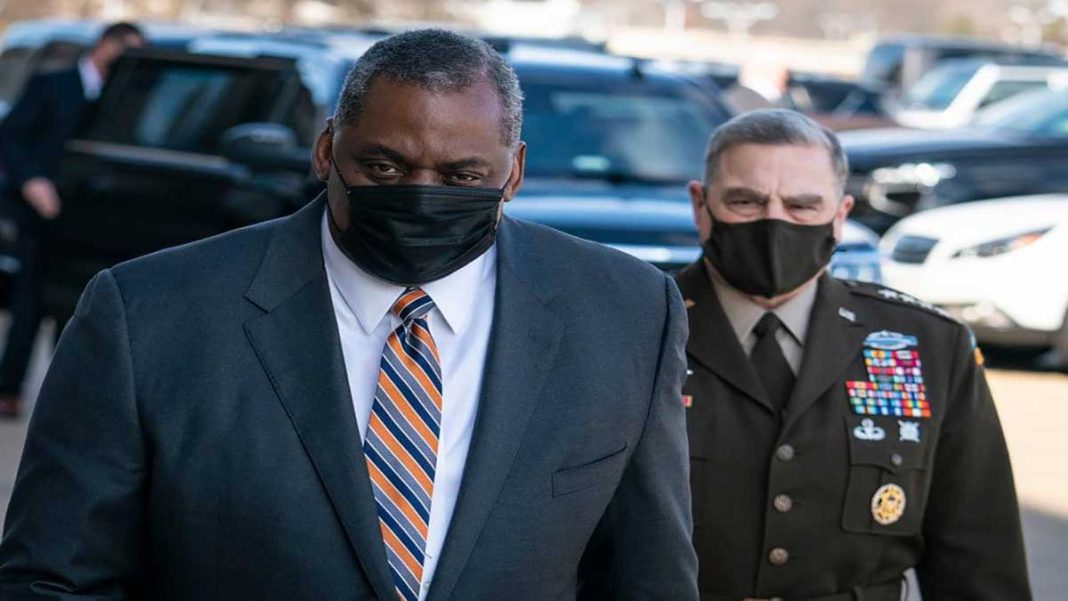Austin, the Pentagon’s top general, has ordered an Army investigation into a terrorist attack on the Manda Bay military base in Kenya.
The attack happened in January 2020 killing three Americans and injuring three others. Austin considered some critical details missing in the original investigation, which was undertaken by US Africa Command.
He is going to meet separately with officials at U.S. European Command, also in Stuttgart.
An independent review will provide added insight, perspective, and the ability to assess the totality of this tragic event involving multiple military services and Department of Defense components
John Kirby, press secretary
Initial Findings
Austin decided to direct the Army to choose a four-star general to oversee the investigation after considering the findings of Africa Command’s inquiry, which have not been made public.
General Paul Funk, chief of Army Training and Doctrine Command, was chosen by the Army.
Funk is a combat veteran who has fought in the Iraq and Afghanistan wars on six separate occasions.
It is the secretary’s desire to ensure there is a full examination and consideration of the contributing factors that led to this tragic event and that appropriate action is taken to reduce the risk of future occurrence.The families impacted deserve nothing less.
John Kirby, press secretary
Al-Shabab extremists attacked the Manda Bay base, destroying six planes and killing three Americans and injuring three others.
On January 5, 2020, 30 to 40 al-Qaida-linked militants took over the base. This was al-Shabab’s first assault on US forces in Kenya.
The early-morning attack sparked a day-long firefight between US and Kenyan forces verses the terrorists, as they secured the base.
Manday Bay Base
The US military has used the base at Manda Bay for years, but it only became a full-time airfield in 2016, with more troops, planes, and operations.
When 20 to 30 al-Shabab fighters slipped through the forest and launched rocket-propelled grenades into the base’s airfield near dawn, the attack began.
The first grenade rounds killed a soldier in a vehicle and injured another, as well as killing two contractors in an airplane and injuring another.
Other al-Shabab militants fired on Camp Simba, a part of the base where US forces are deployed, about a mile down the coast.
Marines from Camp Simba were the first to arrive at the scene of the attack and began fighting back against the militants who had gained access to the airfield and houses.
However, it took Kenyan and American security forces all day to put down the assault, search the airfield, and protect the zone.
Major Improvements
Air Force Col. Chris Karns, a spokesperson for US Africa Command, said the inquiry was conducted with “great rigor” and resulted in a series of immediate changes.
He said that the aim was to convince families and the general population in the United States that “we did everything possible to recognize the situation and take effective steps.”
The investigation team made findings and recommendations that fall outside U.S. Africa Command purview and ability to effect, therefore we fully support the additional independent review directed by the Secretary of Defense. We are confident in the report’s findings and remain committed to ensuring fixes and improvements in Kenya and across the continent.
Air Force Col. Chris Karns, a spokesperson for US Africa Command
Violent Extremists
Kenya has been a central base in the battle against al-Shabab, a Somalia-based militant group that is one of the world’s most extremist.
Al-Shabab has carried out a series of attacks in Kenya, including on buses, schools, and shopping centers, targeting civilian targets.
During President Donald Trump’s presidency, Al-Shabab was the subject of an increasing number of US airstrikes within Somalia.
However, Trump ordered the evacuation of the nearly 700 American troops stationed there late last year, and the majority of those troops were out of the country by mid-January.
Officials claim there are currently less than 100 US troops in Somalia. Austin has started an analysis of America’s global military strategy.

